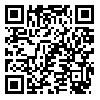Volume 10, Issue 2 (4-2022)
J. Pediatr. Rev 2022, 10(2): 155-160 |
Back to browse issues page
Download citation:
BibTeX | RIS | EndNote | Medlars | ProCite | Reference Manager | RefWorks
Send citation to:



BibTeX | RIS | EndNote | Medlars | ProCite | Reference Manager | RefWorks
Send citation to:
Ghandi Y, Mehrabi S, Safaei M. Electrocardiography Adverse Effects Systemic Glucantime in a Child With Cutaneous Leishmaniosis: A Case Report and Brief Review. J. Pediatr. Rev 2022; 10 (2) :155-160
URL: http://jpr.mazums.ac.ir/article-1-387-en.html
URL: http://jpr.mazums.ac.ir/article-1-387-en.html
1- Department of Pediatrics, Clinical Research Development Center of Amirkabir Hospital, Arak University of Medical Sciences, Arak, Iran. , drghandi1351@gmail.com
2- Student Research Committee, Arak University of Medical Sciences, Arak, Iran.
2- Student Research Committee, Arak University of Medical Sciences, Arak, Iran.
Abstract: (2311 Views)
Background: Antimonial compounds are the most common choice for the treatment of cutaneous Leishmaniosis (CL). Antimonial toxicities are common and cardiac toxicity is one of them, which leads to the electrocardiogram (ECG) changes. In this study, ECG changes in a patient with CL, who received systemic glucantime, were evaluated.
Objectives: A 7-year-old girl was admitted to Amir-Kabir Hospital with the complaint of skin lesions (CL) on her left leg from ten months ago. The patient had received glucantime (10-20mg/kg/day) as a treatment for two 15-day periods and unfortunately, she had not responded to the treatment. Due to the cardiac side effects of glucantime, cardiology consultation was requested and an ECG was performed for the patients during the administration of treatment for the third time. Several ECG changes were detected, including first-degree block, right bundle branch block (RBBB), and QTc prolongation. The cardiologist stopped the treatment with glucantime to improve the ECG changes, and an ECG was taken every week. Even though prolonged QT interval and RBBB improved after a month, the first-degree block was present for ten months.
Conclusions: ECG monitoring is necessary prior to and during the treatment with this drug. Moreover, RBBB has not been commonly reported in other studies. Thus, it should be considered as one of the cardiac side effects of glucantime and needs more attention.
Objectives: A 7-year-old girl was admitted to Amir-Kabir Hospital with the complaint of skin lesions (CL) on her left leg from ten months ago. The patient had received glucantime (10-20mg/kg/day) as a treatment for two 15-day periods and unfortunately, she had not responded to the treatment. Due to the cardiac side effects of glucantime, cardiology consultation was requested and an ECG was performed for the patients during the administration of treatment for the third time. Several ECG changes were detected, including first-degree block, right bundle branch block (RBBB), and QTc prolongation. The cardiologist stopped the treatment with glucantime to improve the ECG changes, and an ECG was taken every week. Even though prolonged QT interval and RBBB improved after a month, the first-degree block was present for ten months.
Conclusions: ECG monitoring is necessary prior to and during the treatment with this drug. Moreover, RBBB has not been commonly reported in other studies. Thus, it should be considered as one of the cardiac side effects of glucantime and needs more attention.
Type of Study: Case Report and Review of Literature |
Subject:
Cardiology
Received: 2021/02/14 | Accepted: 2022/04/20 | Published: 2022/04/25
Received: 2021/02/14 | Accepted: 2022/04/20 | Published: 2022/04/25
Send email to the article author
| Rights and permissions | |
 |
This work is licensed under a Creative Commons Attribution-NonCommercial 4.0 International License. |









